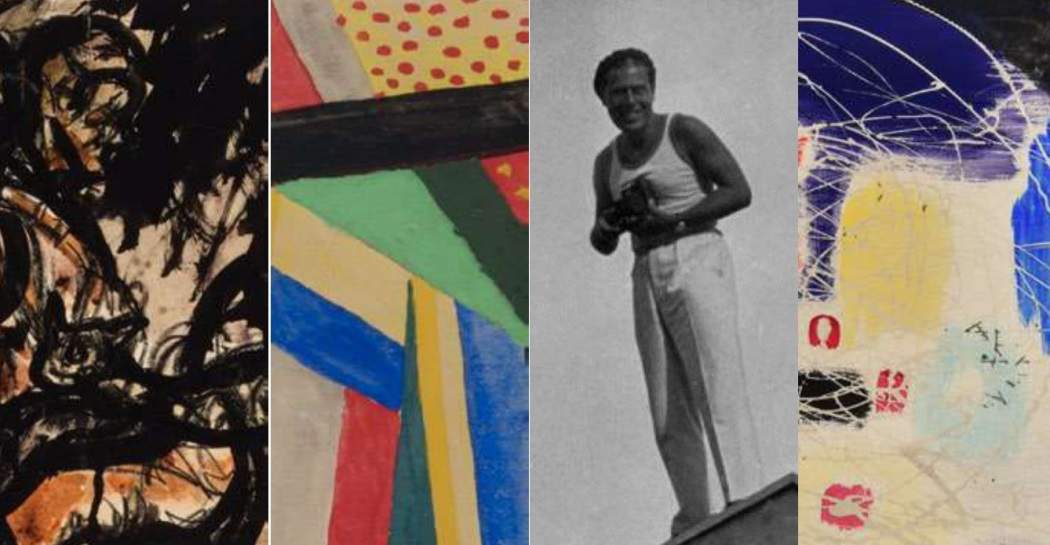From November 28, 2019, to March 15, 2020, the Modern Art Gallery of Rome is staging The Revolution of Vision. Toward the Bauhaus. Moholy-Nagy and His Hungarian Contemporaries, an exhibition dedicated to the art and memory of László Moholy-Nagy, Hungarian-born artist and key figure of the Bauhaus movement worldwide, on the occasion of the 125th anniversary celebration of his birth (1895-2020).
On display, exclusively forItaly, is a selection of original paintings, photographs and graphics to which are added three films by the artist, works that traverse Moholy-Nagy’s production in the time span from the 1910s to the 1940s and recount the many aspects of his work and building theories so as to offer a vast and comprehensive panorama of his creative workshop. A journey betweenHungary and Germany where, in 1923, he met Walter Gropius who, deeply impressed by his work, invited him to collaborate at the Bauhaus in Weimar. It will be, this, the most significant period of his activity and the beginning of that personal “graphic sign,” carried out in painting as well as in photography and video, which will also be the origin of his fame as the representative par excellence of European Bauhaus photography, to which the publication of Painting Photography Film (1925), the eighth volume of the Bauhaus Books and the first fundamental text of contemporary avant-garde photographic technique, certainly contributed.
The exhibition is enriched by an important section of paintings and sculptures by artists of the Hungarian Avant-Garde, between Expressionism and Bauhaus, most of them never before presented in Italy and coming from the Déri Museum in Debrecen(Antal-Lusztig collection) and theMuseum of Hungarian Photography in Kecskemét. Present are works by Róbert Berény, Ede Bohacsek, Sándor Bortnyik, Lajos Kassák, Ödön Márffy, János Mattis Teutsch, József Nemes Lampérth, Lajos Tihanyi, and Béla Uitz. All artists who, between Hungary and Germany, defined the visual culture of CentralEurope between the 1920s and 1940s.
The section of the exhibition Budapest in Rome. Hungarian Artists in the Capital between the Wars, curated by Arianna Angelelli and Claudio Crescentini and featuring works from the Modern Art Gallery’s collection, is devoted to Magyar artists active in the capital between the 1910s and early 1940s. This part of the exhibition recounts in depth the special relationship of creative collaboration and artistic interchange between Italy and Hungary at the moment of the highest expression of the 20th-centuryEuropean Avant-Garde. The artists on display include Istvan Csók, Ferenc Sidló, Béla Iványi Grünwald, Aba Novák, Paolo Molnár, István Réti, along with videos (two years 1932-33) from the archives of theIstituto Luce-Cinecittà and filmed during exhibitions of Hungarian artists in Rome. Reinforcing the identification of a strong Hungarian presence in Italy between the two wars and the continuous relations between artists from the two countries, with particular reference to the European Bauhaus “wave,” are also some very rare documents from the Prampolini Fund of the CRDAV, the Visual Arts Documentation Research Center of the Capitoline Superintendency. These include two autograph letters sent by Gropius, who was in Weimar at the time, to Prampolini in 1922 and 1923, and an autograph letter sent by Moholy-Nagy himself to the Futurist artist, also from Weimar, in 1924.
For all information you can visit the official website of the Gallery of Modern Art.
Source: press release
 |
| László Moholy-Nagy and the Bauhaus movement on display at the Galleria d'Arte Moderna in Rome |
Warning: the translation into English of the original Italian article was created using automatic tools. We undertake to review all articles, but we do not guarantee the total absence of inaccuracies in the translation due to the program. You can find the original by clicking on the ITA button. If you find any mistake,please contact us.